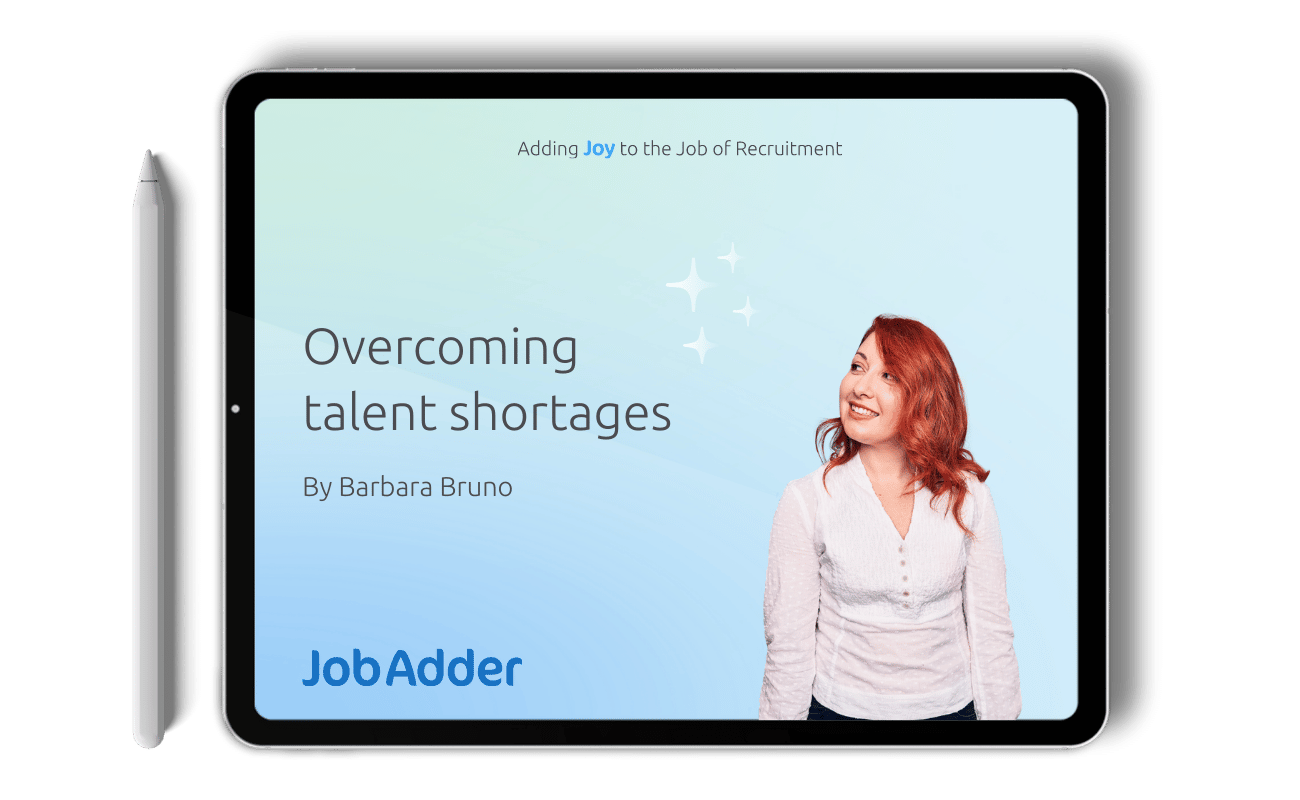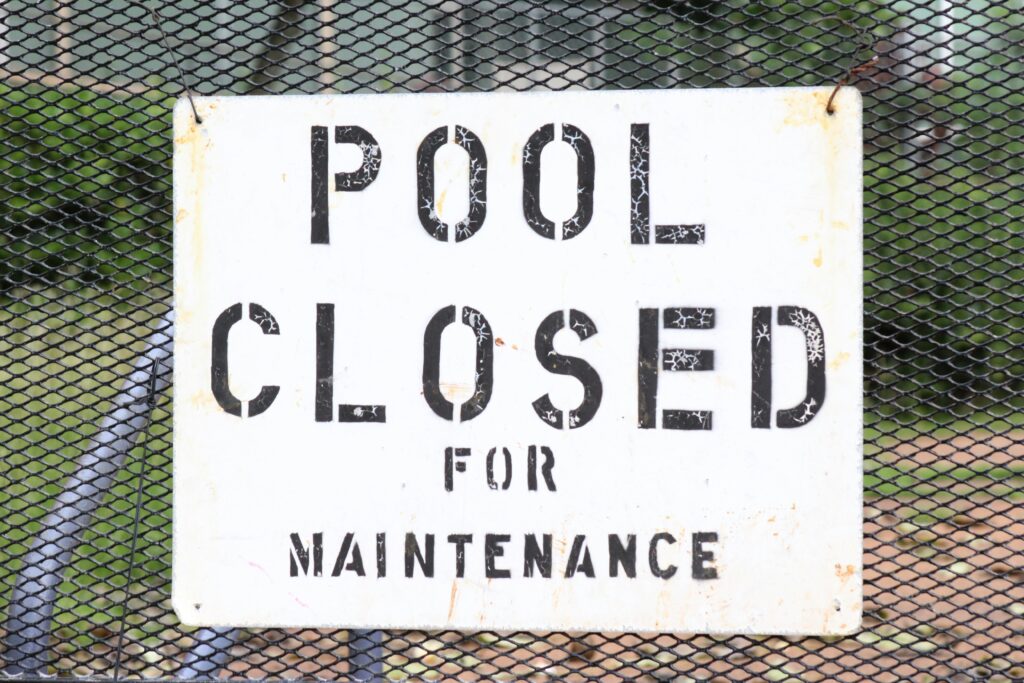Recruitment Blog
How to create and maintain a great candidate experience

The candidate experience is one of the most important parts of recruitment and talent acquisition. In order to nurture and maintain a large talent pool of qualified candidates, you need to create a great candidate experience.
Let’s explore how improving the candidate experience can benefit your recruitment agency or company in the long run.
ACCESS OUR FREE EBOOK: Overcoming talent shortages with recruitment expert Barbara Bruno
What is the candidate experience and why is it important?
The candidate experience is one of the most important parts of your hiring process. After all, the recruitment process is the candidate’s first impression of your agency.
If candidates have a positive experience, they’ll be more likely to accept an offer, recommend you to their colleagues or return to you if they want a new role.
You should also keep in mind that the candidate experience starts at the very beginning of a job seeker’s search. It includes the initial communication, application process, interview process and onboarding (or rejection).
Ensuring your entire hiring process is seamless will provide a great candidate experience and encourage a higher retention rate in the workplace.
The candidate experience: What are the qualities of a great candidate experience?
Here’s what you need to consider to provide a great candidate experience throughout your talent acquisition process:
- Detailed and clear instructions
- Hire to fill a need
- Define the desired skill set
- Communication is crucial
- Be accessible
- Angle for encouraging over intimidating
- Be honest about your timeline
- Notify contenders when a job has been filled
- Support your hire
Detailed and clear instructions
An unclear application process is the number one cause of a bad candidate experience.
Candidates should feel like they have all of the information after reading the job description. If you’re going to have a multi-step process, background checks or a project to complete that should be stated upfront.
If job seekers feel like they have an easy and seamless job search, they’ll be more likely to have a positive candidate experience
Making it easy to apply overall sends a good message to candidates and reflects well on the employer branding.
Hire to fill a need
Before you start recruiting, you should know exactly which roles you’re trying to fill.
Ask: Where in your company are you hurting? What skills are lacking amongst current employees or teams?
We suggest performing a skills gap analysis to find out exactly what’s lacking.
Nothing is more frustrating to candidates than going through an interview process and then being told the role has changed or they no longer need it anymore.
After all, you don’t want to waste your candidate’s time. To do so, you should only suggest candidates for roles that meet a clear need.
Define the desired skill set
Once needs have been figured out, you should clearly state them. Some employers like to list everything they would prefer a candidate has without being concise on what candidates need to have.
If you’ve already taken the time to examine weak spots in your business, then you should make sure they will be covered by the new hire. You don’t want to waste the time of a candidate who could be applying to a job they’re more suited to.
Communication is crucial
This statement is true for many parts of the hiring and onboarding process. When it comes to improving the candidate experience, communication is crucial.
Employers should be clear about what they’re looking for, but also how the hiring process is expected to go.
Writing back to people you’re interested in is obvious. Let the candidate know when to expect a follow-up email or call. Additionally, you should make an effort to provide an answer to all job posting respondents, even if their qualifications don’t meet your needs. This allows job seekers to avoid waiting for a response and wasting their time.
At the very least, an employer should have an email template set up to let people know their application has been received. Don’t leave people wondering.
Be accessible
You should be accessible to any candidates going through the hiring process. Be sure to provide candidates with contact details for the person in charge of new hires or human resources.
Furthermore, you should always ask if there are any reasonable accommodations or accessibility requests from candidates.
By asking this and providing the necessary support, you can better serve and promote candidates with disabilities and adjust your hiring processes to account for any access needs.
Be attentive and respectful during the interview
Prior to the interview, the employer should review the candidate’s resume, so they can get down to real questions right away. You don’t want a candidate to have to read off their career history line by line.
If possible, the employer shouldn’t schedule anything immediately after an interview. The interviewee should have time to ask questions and not feel hurried out. This gives the candidate a positive impression of the company culture and gives them the opportunity to discuss next steps.
Be honest about your timeline
Employers should always let people know when they should expect to hear back and stick to that date. If there’s going to be a second round of interviews, there should be a timeline for that.
If someone has no indication that they will hear back from you, you may lose out on a good candidate if they take another job while they’re waiting.
Notify contenders when a job has been filled
It’s not uncommon for an employer to make a decision and then think they’re done with the process.
Once you’ve called in everyone for the final interviews and made a final decision, you should send out an email to all the finalists to let them know the role has been filled.
Just as you don’t want to lose someone you wanted when they haven’t heard from you, you don’t want someone to lose out on another opportunity if they still think they’re in the running.
Support your hire
Once you have someone placed in their new role, make sure they see continued support. The candidate experience continues through the onboarding process, and in order to reduce new employee turnover, make sure new hires have everything they need to thrive.
Don’t forget to include a candidate experience survey
In order to gather data from your candidate’s overall experience, you won’t want to forget to send out a candidate experience survey. These can be really insightful for improving your overall candidate experience
Getting real-time data from candidates with both positive and negative experiences will allow you to see exactly what you’re doing wrong and what you’re doing right.
Gaining these insights can help you get more accepted job offers, optimise your recruiting strategies and even grow your talent pool.
Frequently asked questions
Can an applicant tracking system improve candidate experience?
The short answer is – yes. Applicant tracking systems can help with the automation of administrative tasks and organise your candidate data. They can also help you easily screen and identify top talent for individual roles.
Will a better candidate experience improve my retention rate?
Improving your candidate experience can help raise your company’s retention rate. Employee experience can be reflected by the work environment, onboarding process and candidate experience.
With a better candidate experience, you can gain more quality hires into open positions that will likely last longer, improving your retention rate in the process.
What could happen if we have a poor candidate experience?
Poor candidate experience can directly correlate to a drop in quality job applicants. The best talent in your industry won’t want to work for a company that provides a negative candidate experience.
Using JobAdder’s Applicant Tracking System to improve your hiring process
It’s in everyone’s best interest to improve the candidate experience and hiring process. You can open up your job opportunities to top talent in the industry and increase successful job matchings as a recruitment agency.
If the hiring process still seems overwhelming, it doesn’t have to be. You can use an applicant tracking system like JobAdder to help automate your hiring process, gain more top talent and improve your careers page.
Want to find quality candidates in a tight talent market? Barbara Bruno reveals her expert tips.

Related blog posts

By Melinda Jennings 2024 has been a big year for talent leaders. Candidate applications are at an all-time high – …
Ready to get started?
Talk to one of our friendly team members


